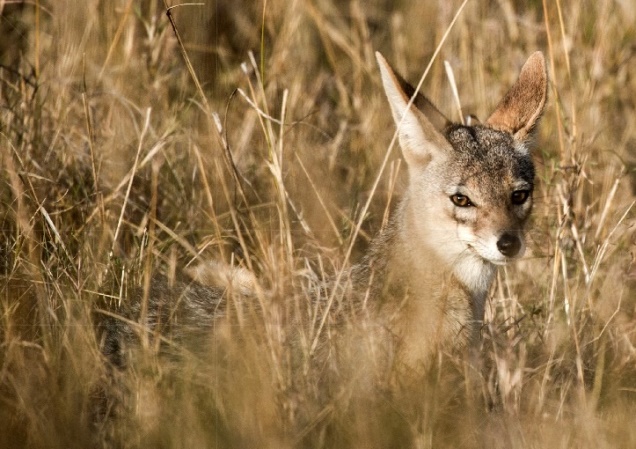The golden jackal (Canis aureus) is the most widely distributed jackal in the world, populating widely diverse habitats across extensive ranges. In particular, this canine predator occupies large areas of northern and eastern Africa, the Middle East, and southeastern Asia. With regard to Europe, scientists have determined that the golden jackal traveled from the Middle East to southeastern Europe about 8000 years ago. However, it remained on the fringe of the European continent and rarely ventured toward more central regions of Europe. Thus, the historical range of the golden jackal in Europe was predominantly restricted to the Balkans and coastal regions along the Black Sea. Since the 1950s, though, the animal has dramatically and rapidly expanded its range across Europe, creating considerable populations in Bulgaria, Greece, Slovenia, Hungary, Austria, and Italy. Small numbers of the golden jackal even occupy areas of France, Germany, Denmark, and the Netherlands. See also: Biodiversity; Dogs; Europe; Population ecology

The golden jackal's range expansion within Europe is a remarkable turn of events. Through a variety of investigative means, including the tracking of animals by GPS-telemetric methods, scientists have followed and studied the dispersal of golden jackals into more western and central regions of Europe, including areas with significant human populations. Based on assessments by the International Union for Conservation of Nature (IUCN), there are more than 117,000 golden jackals inhabiting Europe. See also: Biotelemetry; Population dispersal; Population dispersion; Telemetering
Animal ecologists have pinpointed the chief cause for successful dispersion of the golden jackal across Europe—namely, the persistent eradication of Eurasian wolves (Canis lupus lupus) from many locations throughout the continent, thus enabling jackals to greatly expand their range. In general, jackals do not venture into areas inhabited by Eurasian wolves because the much larger wolves would prey on the jackals or would outcompete the jackals for the same food sources. However, wolves have been targeted for elimination by farmers and animal breeders since the 1950s. With the number of wolves being considerably reduced to less than 20,000, this has enabled opportunities for the golden jackal to enter and populate areas that it had never inhabited previously. See also: Population viability; Predator-prey interactions
In addition, the expansion of golden jackals into areas where there was no previous contact with humans is causing further problems. The golden jackal has a broad and flexible diet, which consists of meat, plants, and food waste. Although smaller in size than the wolves that were targeted for eradication by farmers and breeders, the golden jackals (often attacking in packs) are adept at killing farm animals, including sheep and other livestock. With the loss of livestock as a result of predation by jackals, farmers and breeders are now contemplating the repopulation of wolves into areas near farming and agricultural enterprises in order to recreate a more favorable ecological balance between the wolves and the jackals, thereby restoring the natural food web within the ecosystem. See also: Conservation of species; Environmental management; Food web





